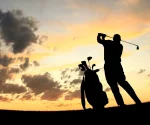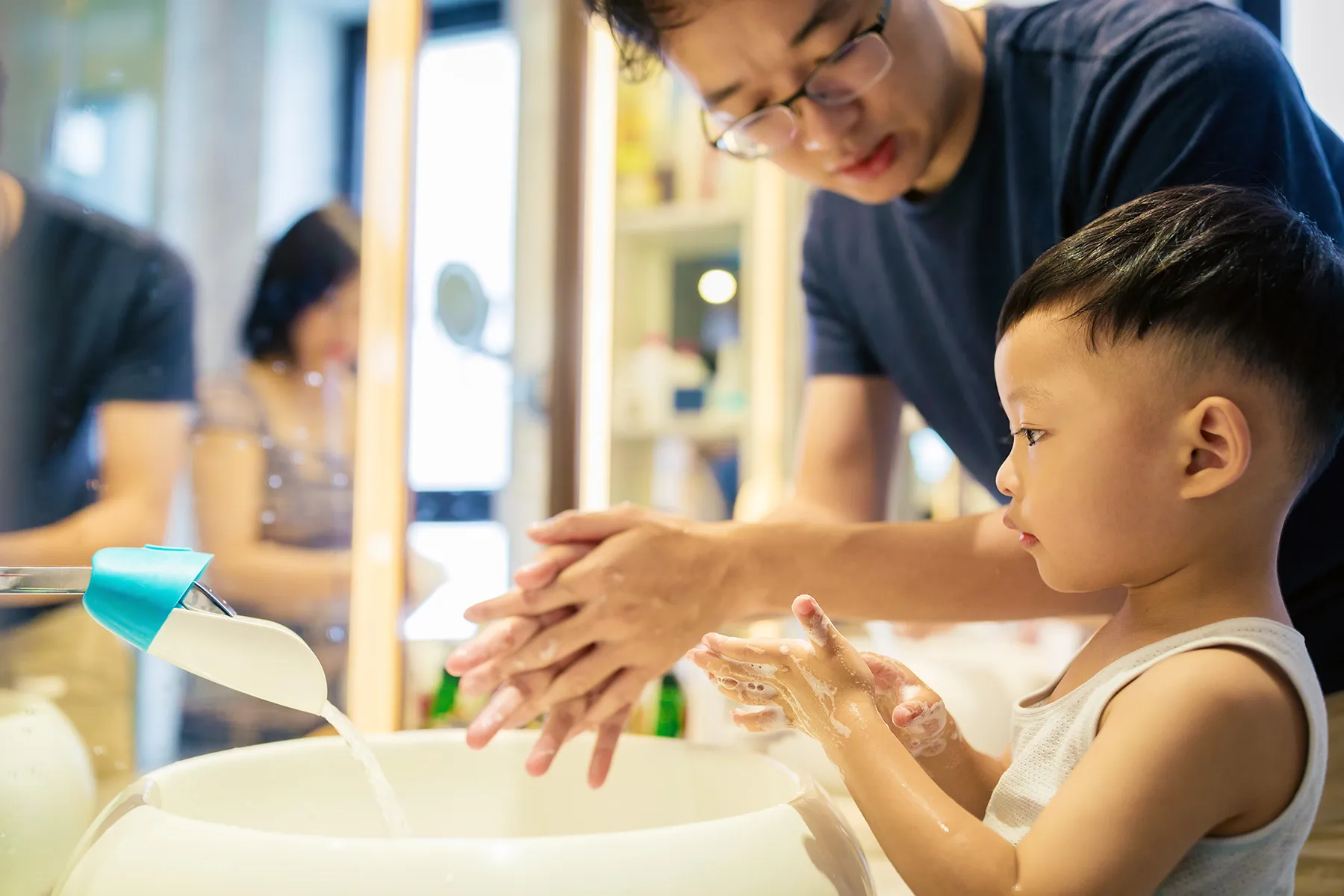As Injuries from Pickleball Surge, Here’s How to Play Safely
[ad_1]
July 24, 2023 – Pickleball.
It’s a new national obsession, the fastest-growing sport in the U.S. And by the end of 2023, it’s expected to yield roughly 67,000 emergency department visits, 366,000 outpatient visits, 8,800 outpatient surgeries, 4,700 hospitalizations, and 20,000 post-acute injury episodes. All told, UBS Group AG financial analysts have forecast that the direct medical costs of pickleball will top $377 million this year alone, mostly due to wrist, lower leg, head, or lower trunk injuries.
So why is one of the most popular and easily accessed sports associated with falls, tears, strains, and sprains? More importantly, what can pickleball players (also known as “picklers”) – especially the 60-and-older crowd – do before play to prevent injuries and avoid a trip to the ER?
Safety starts with risk perception.
“It’s a funny name, you get lulled into the sense of security, and that’s where you can increase your risk of injury,” said Joshua S. Dines, MD, a sports medicine specialist at the Hospital for Special Surgery in New York City, and medical director for Major League Pickleball.
Felice de Jong, PhD, a 67-year-old scientist who lives in Nellysford, VA, explained that when she first heard the name “pickleball,” she thought it would be a “piece of cake, like playing tiddlywinks.” Because she had spent a lifetime being active, she dove right in after only a few lessons, badly twisted her ankle, developed tennis elbow, and was forced to lay off the paddle for a few weeks before returning to the court.
Her advice to others is simple: Play at your own risk.
“Despite the way the name sounds, it really requires a general overall level of fitness. If you’re not fit, don’t play, because you’re gonna get injured,” said de Jong.
For those who don’t know, pickleball is a sort of mash-up of tennis, badminton, and table tennis. It’s played on a badminton-sized court, includes a net, uses a paddle instead of a racket, and includes a plastic ball with holes.
Bill Edelman, 67, a retired medical device professional who splits his time between Boston and Florida, said pickleball might seem less physically taxing, but it’s still a sport.
“Respect your age,” he said. “You’re not a 20-year-old playing this game; you’re your age playing the game. The issue is that unless you have some experience playing it (and I’m not an expert by any means), you should be a little more respectful of the fact that you’re undertaking something new.”
Edelman, who tore his knee meniscus when he first started playing pickleball, said he was not even aware that he was tripping over his own feet all the time or thinking about stepping on his laces because he did not know how to stand correctly.
“It led to me falling down,” he said.
Lulled Into Complacency
During the pandemic, pickleball was a gateway to activity, especially for people in their 60s and 70s, many of whom were forced into or chose retirement at a time when businesses were failing or laying off workers. It quickly became a seemingly low-impact workaround to mandatory lockdowns, allowing people to gather outdoors and socialize. It was also addictive; over the past 3 years, pickleball participation has surged almost 159%, it’s become a globally recognized professional sport, and has started to attract younger players in their 20s and 30s. It’s even being taught in middle and high schools.
But like many other exercise trends, the pickleball path is often paved with landmines, which, in this case, start with overuse injuries; inflamed, painful tendons (tendinitis); and chronic tendon problems.
“People are out there for … 4 or 5 hours, rotating and playing with different people,” Dines said. “That’s where they subject themselves to potentially more sort of overuse-type injuries just from the sheer hours.”
Dines said that he has seen his share of injuries over the past few years, ranging from knee meniscus tears and back pain (mostly due to the lateral movement, leaning forward, and lunging) to rotator cuff tendinitis and tennis/golfer’s elbow.
Some of these injuries (especially those to the knee), can be serious.
“A lot of the pickleball population are older adults above the age of 50 and 60, and they have baseline arthritis,” said Kenneth Vitale, MD, a sports medicine doctor and professor of orthopedic surgery at the University of California, San Diego.
“When you have arthritis in the knee and then further aggravate it with a twisting event or trauma, the arthritis can flare up. Unfortunately, picklers are notorious for continuing to play through injury, which [helps] progress their arthritis, and then eventually, they need joint replacement surgery.”
Many older people also have low bone density or osteoporosis, so when they fall, they’re more likely to get a fracture or worsening joint decline than someone who is younger or has higher bone density, he said, adding that he’s seen a lot of wrist fractures.
“There was a study recently that found that pickleball players who had wrist fractures required surgery at a higher rate than the general population that had the same wrist fractures if they were above the age of 65,” he said, which means it’s a more aggressive form of falling.
A Balancing Act
Although the adage “it’s all fun and games until someone gets hurt” readily applies to pickleball, the game does offer many health benefits. Vitale said that the sport provides players with cardiovascular fitness, improved muscle strength, and the opportunity to work on balance and coordination. Like other moderate activities, it can also help release feel-good endorphin hormones that fight depression and other mood disorders.
It’s no wonder that it took off like wildfire during the pandemic.
Brenda Shaeffer, a doctor of physical therapy in private practice in Annapolis, MD, noted that the three Rs are important: “You better be READY for it and understand what you are getting into, know what your RECOVERY strategy is, and REST between play,” she said.
She explained that patients often don’t understand that pickleball is different from anything else they’ve been doing their entire lives. “They’re not used to doing the movement pattern that is required of them with their legs – from standing to moving forward and backwards to stepping to the side.”
The star lunge – an exercise that entails bending slightly at the hip while ensuring that the core remains still – works on and mimics the lateral movement that is needed to play pickleball and is one that Shaeffer focuses on when picklers come into her office.
Working on balance is, likewise, essential.
“Pickleball is great for improving balance, but you need to have a certain level [first] to be safe doing it,” said Stephanie Bloom, a physical therapist who practices in Bethesda, MD.
“There are three main sensory systems that help us keep our balance: vision, our muscle and joint receptors, and our vestibular system,” she said, noting that the latter is responsible for keeping people safe when they are doing really quick movements and changes in direction.
“Balance, especially in the aging population, is a problem because most people’s eyes have changed significantly,” said Shaeffer. “The [inability] to evaluate what they’re seeing, and then what they have to do is very delayed, and people literally fall down.”
To counter this, Shaeffer recommends an exercise called Fukuda Step, which can help test balance dysfunction and the body’s ability to adjust accordingly. She said she first asks patients to march in place at about a 1-second speed for about a minute, without looking at their feet.
She then asks them to see if they can do the same with their arms stretched in front of them at shoulder height, thumbs together, and eyes closed.
The goal is to train the brain to know where you are moving – forward or side to side – without using one’s eyes so that it can be achieved while the player keeps their eyes on the ball.
In addition, warming up before play is critical but rare.
“Pickleball players are notorious for not warming up, they just go right out and play,” said Vitale.
And with older adults and loss of muscle mass, strength training, like body weight squats, can help build up [the] quadriceps to be able to tolerate the rigors of the stop/start motion and leaning and lunging,” he said.
Other things to note include post-exercise recovery, including stretching and hydration/rehydration (which is also important during play and for reducing injury risk), limiting hours and number of days of play, and including other activities, especially those geared toward core and leg strengthening and agility on non-pickleball days.
Dines, Vitale, Shaeffer, and Bloom all said the right shoes are also critical for avoiding injuries – especially those that are ankle- and stability-related.
“I’ve asked a lot of patients what they wear when they play, and they say that they just grab whatever is in their closet,” Vitale said. “While running and walking shoes are made for forward motion, court shoes are made for the lateral side-to-side movement that occurs in pickleball very quickly,” Bloom said.
Finally, Vitale offered the following advice:
“I tell every pickleball player that comes in the same three things,” he said. “Listen to your body. Let pain be your guide. And if it hurts, don’t do it. You’ll be much happier playing pickleball if you follow those three rules. And you’ll be able to play for many years.”
Correction: Stephanie Bloom’s credentials were incorrectly listed in an earlier version of this story. Bloom is a physical therapist, not a doctor of physical therapy.
[ad_2]
Source link









